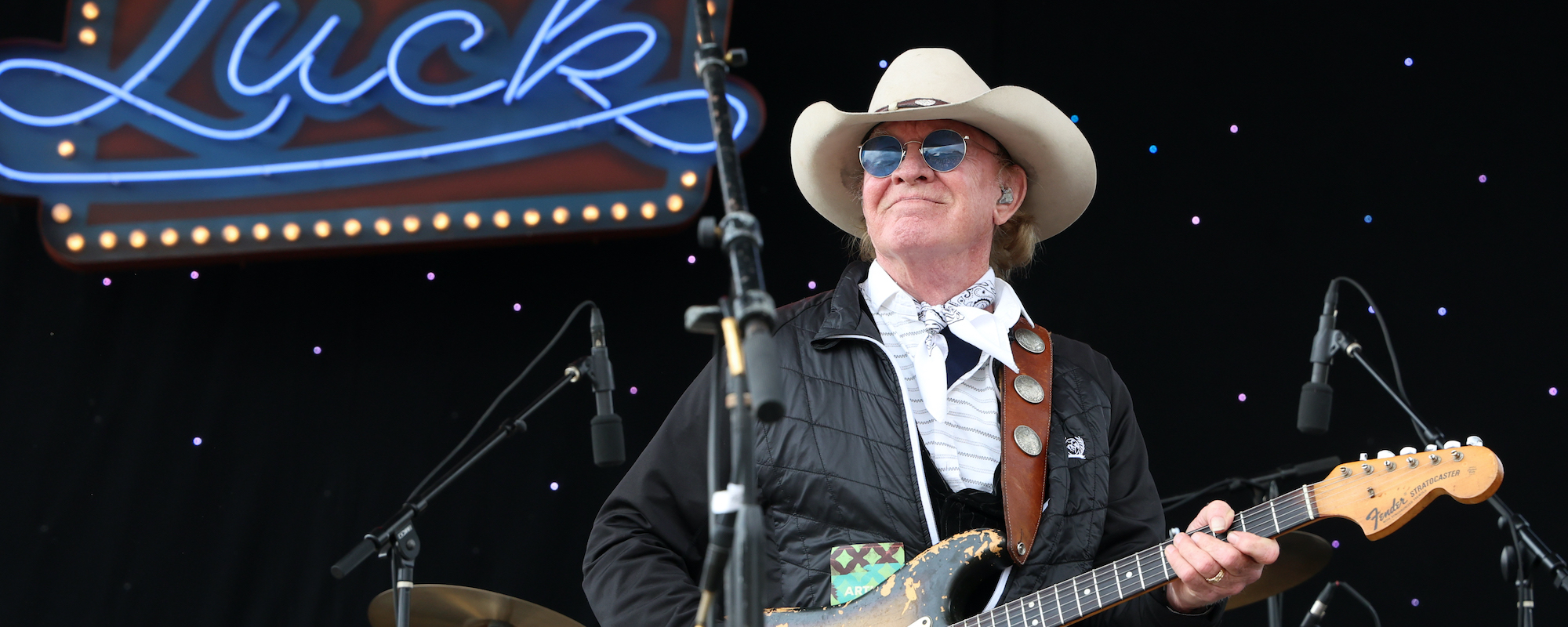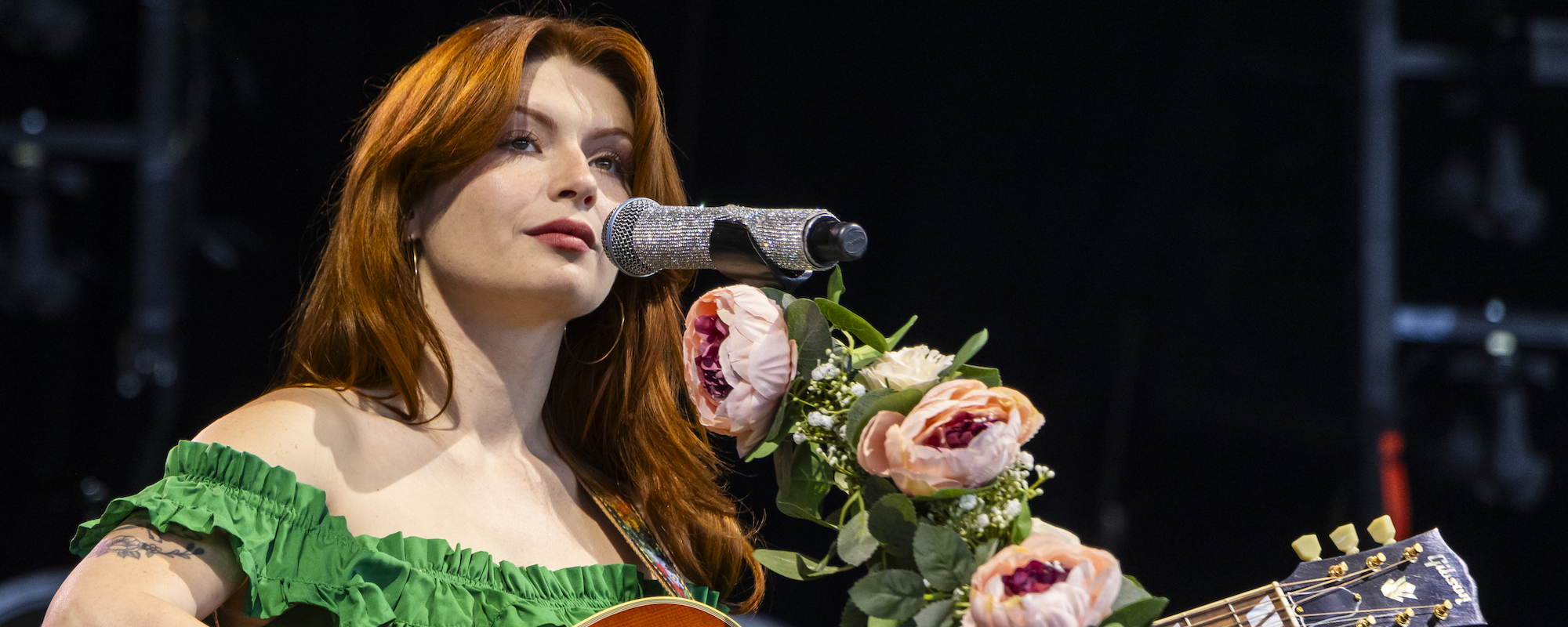One could use many words to describe Shawna Virago. She’s a singer/songwriter, filmmaker, artist, trailblazer, activist, and much more. One of the first openly transgender artists, Virago has been recording, touring, and performing as her authentic self since the early ‘90s. So “courageous” would be another fitting modifier. However, those who take time to speak with her would also add “humble” “insightful” and “optimistic” to that list of descriptors.
Videos by American Songwriter
In May, Virago released her latest album Blood in Her Dreams to acclaim from fans and critics who took notice. Today, we’re sharing the unreleased music video for the album’s title track.
Earlier this fall, Virago sat down with American Songwriter to discuss her new album, her history in the music scene, and more.
Shawna Virago on Being Trans in the Music Industry
As mentioned above, Shawna Virago has been openly trans since the early ‘90s. So, we asked her for her perspective on how things have changed for trans and queer musicians over the last three decades.
“I remember sometime in the early 2000s, a trans guy who was in transition was telling me about his musical ambitions. He had what we probably think of as traditional ambitions—getting on a label, getting support from the label, getting to tour,” Virago said. “And I was really struck by that idea and that worldview that he actually had what we would call typical ambitions in the music industry. It struck me because I never felt that was a possibility for me,” she added. “I think a handful of other trans musicians that I knew in the early ‘90s and onward and I never felt that was an option. I would say ambition of any kind was not an option. It was really about making sure you could pay your rent, avoid street violence and police harassment.”
Things Have Changed
In Virago’s opinion, things have gotten better. However, we still have a long way to go as a society. “Now, all these years later, there’s these little pockets of queers making music that are quite supportive of trans musicians. I’m really grateful for that. So, I still don’t think I’ll ever fit into a lot of the mainstream music industry. But I appreciate that there is now space for those of us who do alt-country and Americana music,” she said. “That’s where I’ve landed and I appreciate that there’s opportunities in these very cool outsider music scenes. That wasn’t even a reality for trans people in the ‘90s, especially the early ‘90s. So, that’s a huge shift,” she added.
“I know we have a long way to go in gender not being the first thing people see in music or that being trans is considered problematic in the country music world. We still have our fights.”
Shawna Virago on Transphobia
American Songwriter noted that the transphobia that permeates many corners of the United States today can be compared to the Satanic Panic of the 1980s. Much of it is based on evangelical fearmongering from people who hate what they cannot understand. Shawna Virago commented on this.
“The zone of belief and thought where all the transphobia comes from allows for no common points of intersection as human beings. It doesn’t allow us to break bread together. And it doesn’t allow for any legitimate exchange or empathy because there’s no critical reason coming from all the transphobic hatred,” she said. “I think our country does most of us no service with the public education we get. We could learn that trans people have been around as long as there’s been humans. There could be a five-minute point in history class and people could get over it at an early age.”
A Humble Trailblazer
As Shawna Virago noted, things have gotten better for trans musicians and other queer artists in the Americana sphere. Folks like Adeem the Artist, Flamy Grany, and Orville Peck among others are seeing success. While she agrees she and a few others opened doors for them, she took time to talk about those who showed her the way.
“When I was growing up, I knew I was trans from an early age. And I sought out any resources I could on being trans. One of the people that I want to shine a light on is a trans woman, Bambi Lake. She played shows locally for several years until certain addiction issues kind of waylaid her. I appreciate also people like Candy Darling, who we wrote a song about,” she said.
“I know there were all kinds of people before me making art and music. But there was no spotlight on them. I do think a lot of us who came out in the early ‘90s did open several doors around creative expression and political activism that had not existed before,” Virago explained. “There weren’t a lot of us. But we had kind of come of age together and had enough people we knew that came before us that created a kind of step that we were able to benefit from. So, I think that’s always the case with all of us. There’s all kinds of people behind us creating our opportunities.”
“I’m grateful I’m still here playing music, getting out there, getting on the road. Hopefully, that will influence younger people in a positive way to write songs and make music. Now, they’re out there having careers because of seeing a few of us out there performing.”
Shawna Virago on “Climb to the Bottom”
Shawna Virago has a unique and ear-catching sound. Blood in Her Dreams is packed with examples of that sound. However, the album opener “Climb to the Bottom” may be the best example of how she weaves punk, country, and Americana influences to create something wholly her own.
“That song, I was writing it when I was going through a bout of depression. It was impacting all of my songwriting. And I also wanted to create a lyrical environment that you might find in a Pogues song, something that Shane McGowan might have written. I was channeling my emotional state into the lyrics,” she recalled. “But then, I didn’t want the song to be a downer for listeners. So, I gave it an upbeat musical approach. I think a lot of my musical influences are in that song even though it’s a three-minute-long rock and roll tune. I have my love of Shane McGowan coming through, I have Billy Zoom when he’s doing 1950s ballad-style guitar,” she added. “I felt that when we finished working on that song it achieved what it needed to be.”
“The Barman’s Daughter” Music Video Is a Stunning Short Film
Like the above video for “Blood in Her Dreams,” Shawna Virago directed the music video for “The Barman’s Daughter.” Shot by Lindsay Gauthier in North Beach, San Francisco, California the short film features Virago alongside drag queens Mira and Churro Nomi. The latter also appears on the album’s cover.
“With that video, I feel, there was something I wanted to capture, almost the idea of ghosts in North Beach and earlier queer scenes,” Virago said.
“The song is about a young woman who is holding family secrets and has sort of a juvenile father. A man who has never grown up. Not to be trusted with the daily receipts. But the video is a little bit of an ode to North Beach,” she explained. “We filmed it in North Beach outside of the City Lights bookstore and in a little alley beside the Vesuvio Café. These are all places that Allen Ginsberg and Jack Kerouac spent a lot of time. We filmed at a hotel where they actually stayed. That’s where a lot of the interiors come from,” she added.
Virago and the rest of the team filmed the video over two days, employing guerilla filmmaking tactics to get their shots without permits or being interrupted by passersby. “It was kind of a punky video to go with a punky tune,” she said.
Blood in Her Dreams is available across streaming platforms. Listen to the album today.
Featured Image courtesy of Shawna Virago













Leave a Reply
Only members can comment. Become a member. Already a member? Log in.